Pronation during running is strongly linked to foot strike pattern in that runners who heel strike pronate differently and have greater pronation overall than runners who are forefoot strikers. Essentially, overpronation is less likely to occur in forefoot running because it removes a lot of wasted movement of the foot than heel strike running, and here’s why:
Forefoot strike runners pronate much less because, for one, ground-contact time is shorter, which leaves less time for abnormal postures of the foot to occur. For another, impact pressure spreads out evenly over a larger surface area of the foot because there’s a much flatter placement of the foot with the ground at landing, shown below:
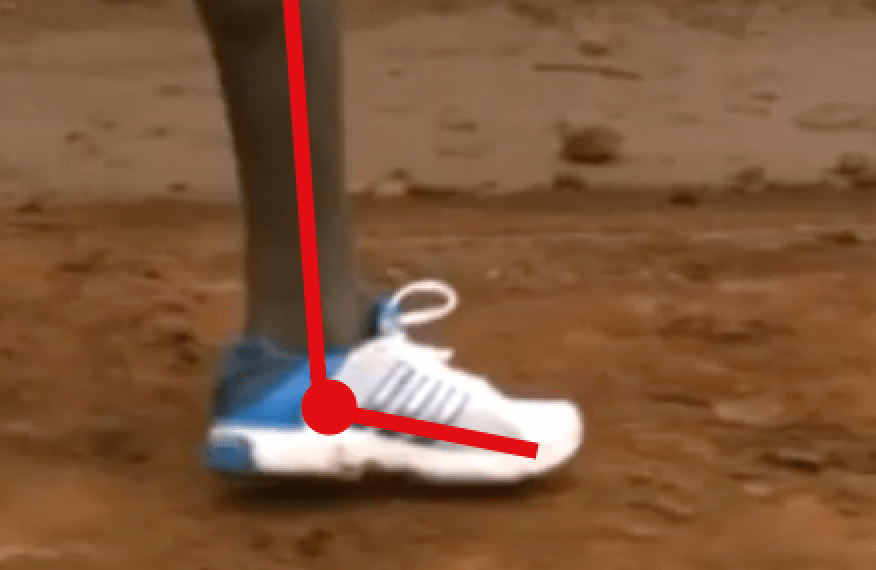
Why Heel Strike Running Causes Overpronation
Landing with a heel strike when running produces greater impact pressure thats confined to a smaller area of the foot, causing overloads to the area. This is notoriously linked to forcing the foot to pronate more in efforts to attenuate the excessive impact, putting more stress on the foot and leg and leads to misalignments of the foot and leg.
This is also why many heel strike runners over-rely on external motion control support in the form of stability running shoes or arch support to limit the hyperpronation.
Worse still, another contributing factor for overpronation in heel strike running is the foot rollover process (shown below) increases ground contact time which was found to increase movement instability at the heel.
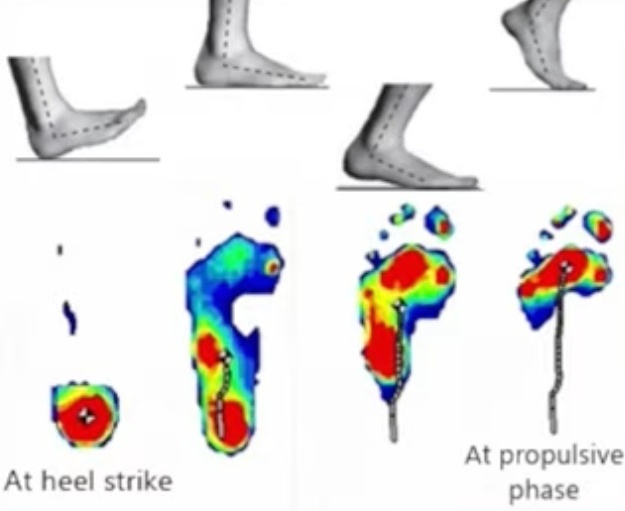
Case in point, study in the International Journal of Sport Biomechanics found that the heel underwent unusually large changes during ground contact when heel striking. These changes were also exacerbated in shod (shoe) conditions compared with barefoot conditions.
-
- In the foot rollover process of heel strike running, the load of the body is transferred from heel to toe, which causes the foot to grapple longer with the ground, which in turn, resulted in abnormal, straining movements of the heel.
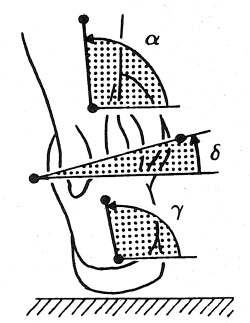
After heel strike, the foot rollover process begins, where the entire weight of the body travels heel-to-toe. This was found to increase the amplitude of overpronation (side-to-side movements of the heel), which imposed higher pressure loads on the foot. This is especially evident in shod (shoe) running conditions as compared with running barefoot.
- In the foot rollover process of heel strike running, the load of the body is transferred from heel to toe, which causes the foot to grapple longer with the ground, which in turn, resulted in abnormal, straining movements of the heel.
This data confirms and reaffirms why there’s countless links between heel strike running and injuries whereby in addition to being significantly more force intensive, heel strike running increases physical stress and mechanical strain by preventing the load of the body from transferring over the foot safely as compared with forefoot running.
Lastly, heel motions are more constrained in forefoot running partly because the foot rollover process is eliminated, which is why ground-contact time is reduced.
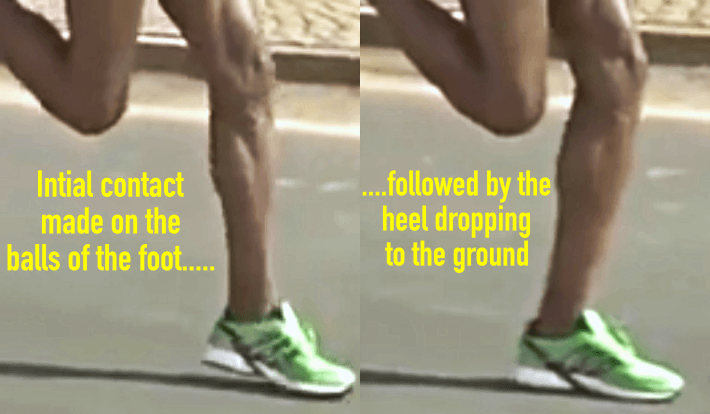

In fact, the heel is actually the last part of the foot to contact the ground in a forefoot strike landing (shown above), and when it does, its so brief that postural instability as well as high impact has less time to occur. This is also why heel injuries are very rare in forefoot running. More on that here!
If you’ve enjoyed my post, you’ll love my YouTube channel here, where I talk more about why forefoot running is better than heel strike running as well as why barefoot running helps you run better in shoes!
References:
[1]. Stacoff et al. The torsion of the foot in running. Int J Sport Biomech, 1989; 5:375-389.
[2]. Kersting, UG. The role of footwear-independent variations in rearfoot movement on impact attenuation in heel-toe running. Res Sports Med, 2006; 14:117-134
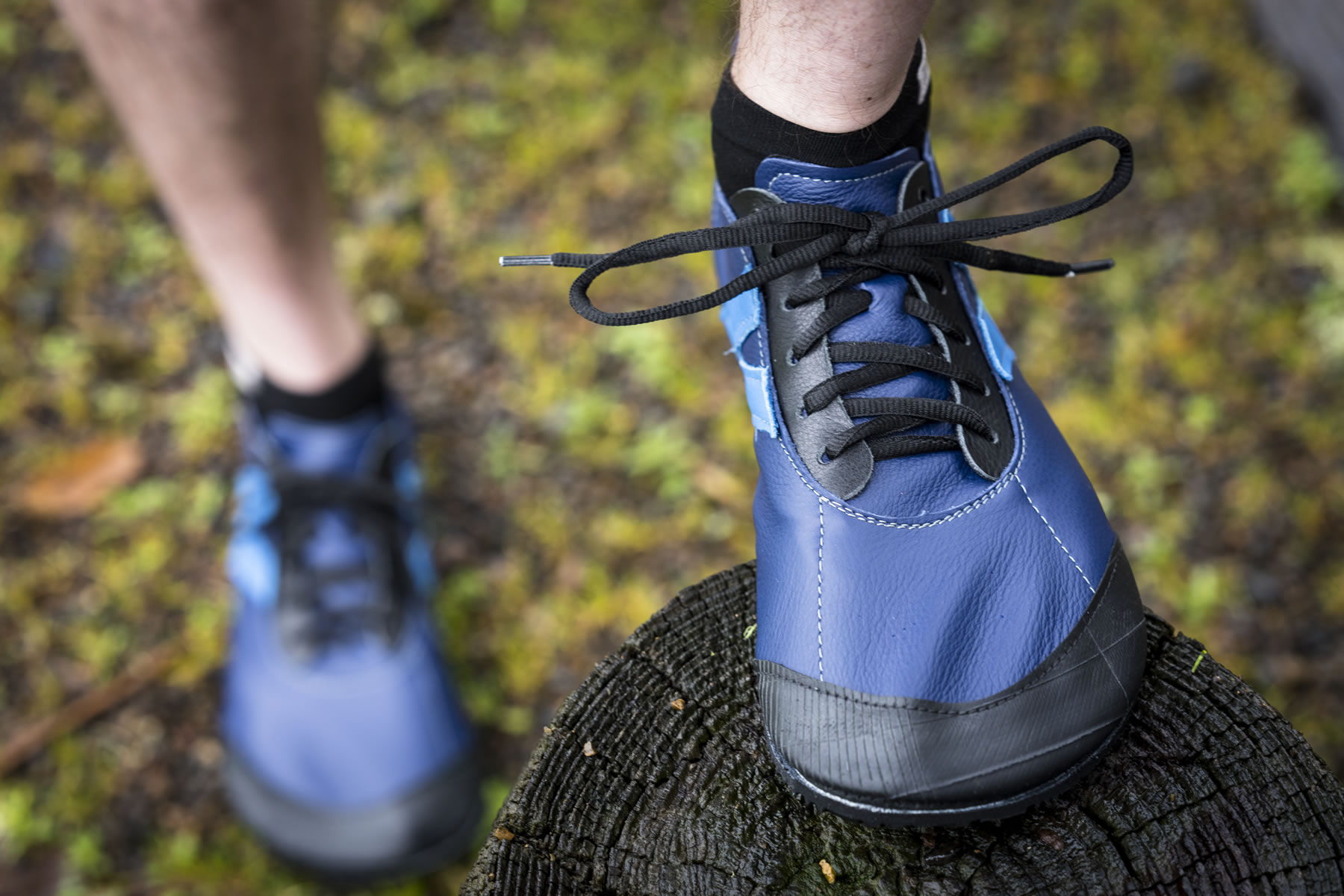
Bretta Riches
BSc Neurobiology; MSc Biomechanics candidate, ultra minimalist runner & founder of RunForefoot. I was a heel striker, always injured. I was inspired by the great Tirunesh Dibaba to try forefoot running. Now, I'm injury free. This is why I launched Run Forefoot, to advocate the health & performance benefits of forefoot running and to raise awareness on the dangers of heel striking, because the world needs to know.
Latest posts by Bretta Riches (see all)
- Can You Run In Barefoot Shoes? Yes, But DON’T Heel Strike! - 21/07/2024
- Why Cushioned Running Shoes Are Really Bad for Your Feet - 19/07/2024
- Do Cushioned Running Shoes Cause Injuries? - 17/07/2024

